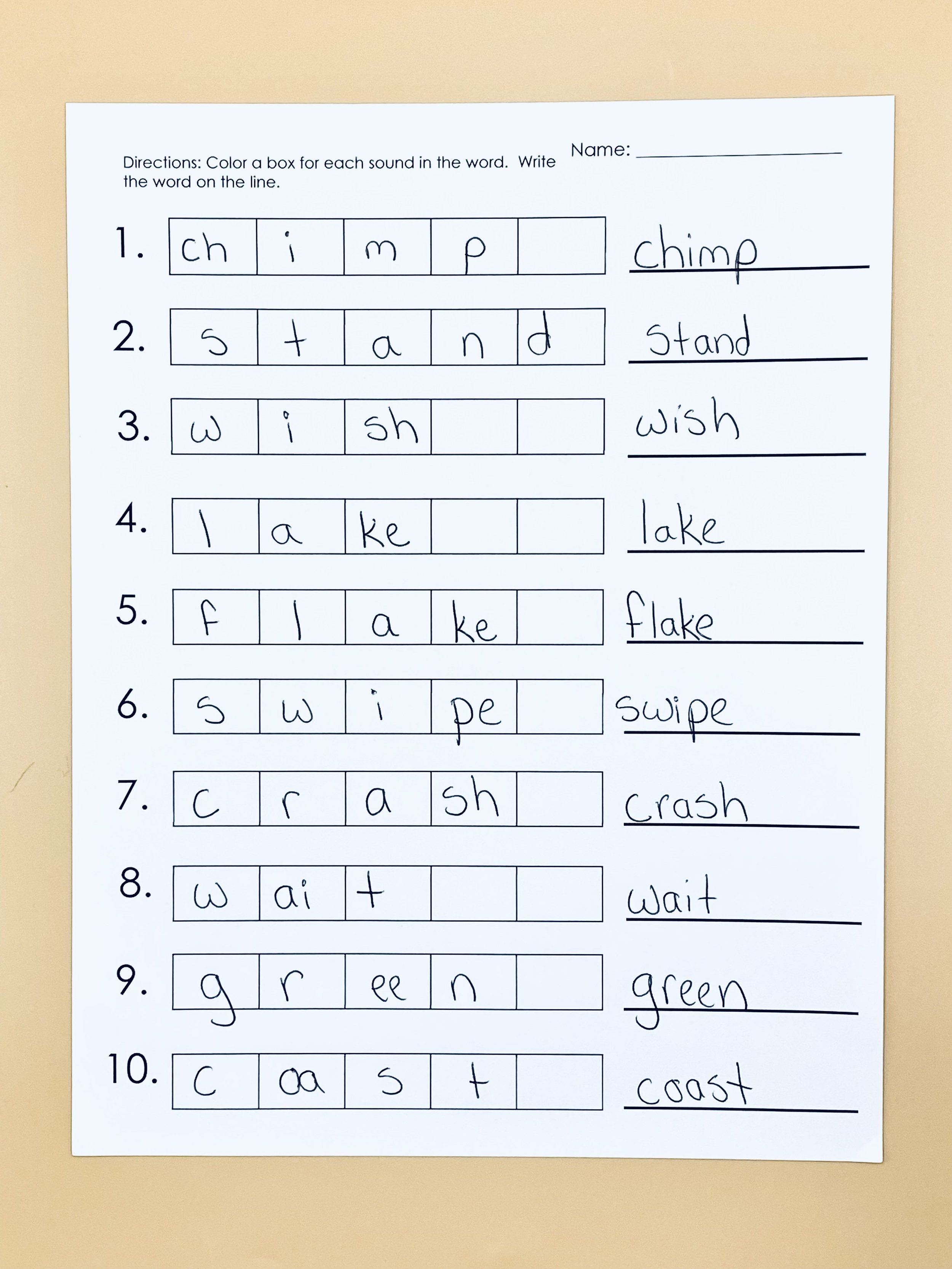
Share This:
A few months ago, I started a series of blog posts where I do a deep dive into specific instructional practices. I started with word chaining, and today I want to continue the conversation with sound-symbol mapping. This practice can be done in whole group, small group, or one on one. With some guidance, it can also be a valuable practice for parents to use with their children at home.
At its core, sound-symbol mapping is about taking sounds (phonemes) and matching those sounds to letters (graphemes). Children are taught to match ONE sound to ONE grapheme, no matter how many letters make up that sound. For example, the word itch has 4 letters, but is only two sounds. The i is one sound, and the tch represents one sound (grapheme). I find this technique to be exceptionally helpful in helping children understand that with very few exceptions, there are no random letters in words (still looking at the g in lasagna for an answer).

In order to practice sound-symbol mapping, you don’t need anything fancy. A sheet with boxes on it will do. I have several that I have created that you can find here. In addition to the sheet with boxes, ensure you have your words prepared. I’d be lying if I said that I ALWAYS have words prepared, but I find everything runs much smoother when they are!
1. Say a word, have students repeat. (Teacher talk: Students, our word is hatch. Please say hatch.)
2. With students, tap the number of sounds in the words. Please note, this is oral-only at this point. (Teacher talk: Let’s tap: h-a-tch)
3. Have students box/highlight the number of sounds in the word. (Teacher talk: Hatch has 3 sounds. Please highlight 3 boxes.)
4. Instruct students to spell the word, putting one sound in each box. Always have students say the sounds as they spell. (Teacher talk: Please spell the word, one sound at a time. Make sure you say the sounds as you write!)
I have used this practice as both a tool when introducing a new rule, as well as for review. When reviewing, it is helpful to use for multiple skills. Try to include as many different skills as possible, like digraphs, blends, magic e, vowel teams, etc. Whatever you have taught up to that point, include! When we only focus on one skill in our review, children will overgeneralize. For example, if we practice nothing but magic e words, you’ll find an e at the end of every word your kids come across!
Keep in mind that sound-symbol mapping is a scaffold. Just like we use manipulatives in math to help represent a concept, these boxes are also a manipulative. The boxes should be used temporarily to assist children in understanding the sound-symbol correspondence. We eventually want all children to write words effortlessly without this scaffold.
Don’t forget, you can snag my sound-symbol mapping sheets here!
Share This:

Savannah Campbell is a K-5 reading specialist. She has taught her entire 12-year teaching career at the school she went to as a child. She holds two master’s degrees in education from the College of William and Mary. Savannah is both Orton-Gillingham and LETRS trained. Her greatest hope in life is to allow all children to live the life they want by helping them to become literate individuals.

Savannah Campbell is a K-5 reading specialist. She has taught her entire 12-year teaching career at the school she went to as a child. She holds two master’s degrees in education from the College of William and Mary. Savannah is both Orton-Gillingham and LETRS trained. Her greatest hope in life is to allow all children to live the life they want by helping them to become literate individuals.
Feeling overwhelmed with all the terminology out there? Want to know the key terms all teachers need to teach phonics? In this FREE Rules of English cheat sheet, you get a 5 page pdf that takes you through the most important terms for understanding English—you’ll learn about digraphs, blends, syllable types, syllable divisions, and move. Grab today and take the stress out of your phonics prep!
